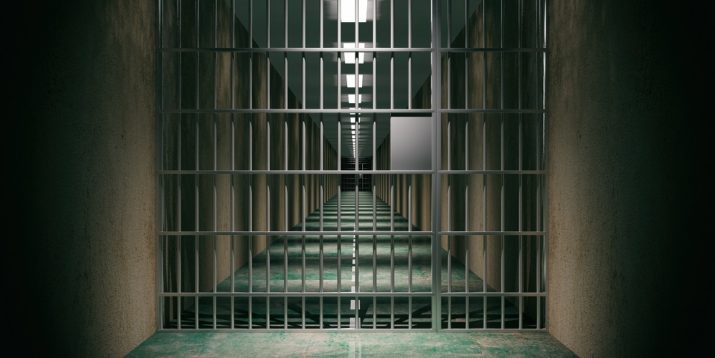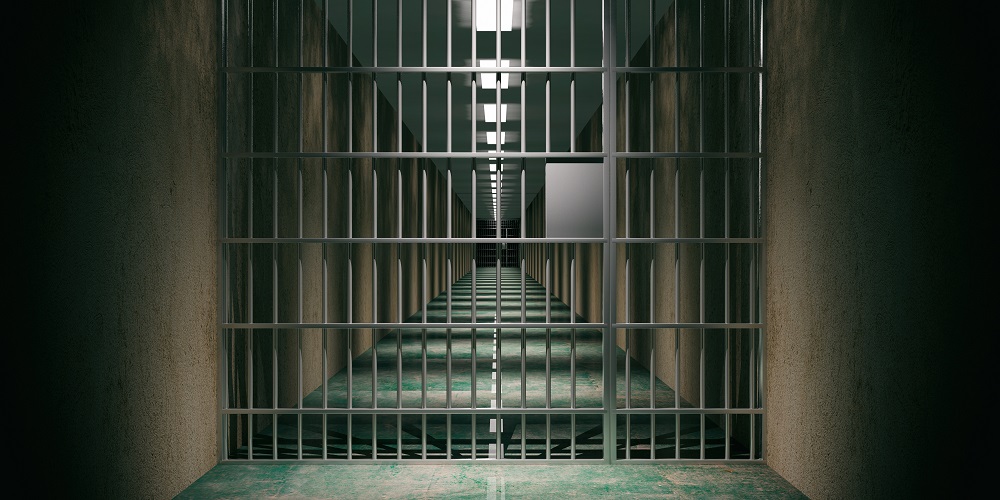

This is part of our special feature on Crime and Punishment.
Of the many areas where America might be said to lead the world, at least one for which this is indisputably true is in its use of imprisonment. With over two million people in prison or jail (not including migrant detention), the United States not only incarcerates more people than any other country in absolute terms but also has the highest imprisonment rate (people in prison per 100,000 in the population) in the world.[1] America’s top ranking in the field of imprisonment is widely known within and outside the country, and President Barack Obama drew attention to prison populations as a problem by giving multiple speeches towards the end of his second term addressing the scourge of “mass incarceration.”[2]
Obama’s use of this term derives from “mass imprisonment,” a concept that emerged in policy and scholarly circles at the turn of the millennium to name the specific American experience of unprecedented, rapid penal expansion that began in the early 1980s and peaked around 2009. During this period, the number of people in US state and federal prisons grew 400 percent, a rate vastly more accelerated than any previous period in American history.
This paper concerns the travels of the “mass imprisonment”/“mass incarceration” concept outside of the US, and how it has come to be an important lens not only for understanding American penal excess, but also for framing European penal progress and problems. Mass imprisonment, though referring to the unparalleled example of the US putting so many of its population behind bars, has come to have global resonance, regularly referenced by scholars making sense of prison systems throughout the world. The transatlantic travels of this concept has, I argue, two consequences: first, it makes everyone else look pretty good by comparison; second, and perhaps more significant, the mass imprisonment concept and debate as it plays out in America has come to shape the way prison populations abroad are understood and addressed, by policymakers, activists, and academics.
I consider these dynamics for Scotland, a small country with moderate, welfarist policies and yet also a country with one of the highest imprisonment rates in Europe.[3] It might be thought of as having the politics of Minnesota but the prison appetite of Louisiana. Minnesota (194, 47th in the US) and Louisiana (816, 1st in the US) both have imprisonment rates well above Scotland’s (143) showing how even a low imprisonment state in the US would rank as a high imprisonment state in Europe. This raises the question of comparability, and yet American mass imprisonment, emerging from a powerful and toxic combination of penal punitivism, entrenched racism, and criminalizing drug policies has become an idea that travels around the world explaining large prison populations through these factors and the relationships between them. How does this recipe for disaster work with the ingredients of Scotland, which has a large prison population, but limited ethnic diversity and a rehabilitation focused penal system?
Journey of a concept
“The Causes and Consequences of Mass Imprisonment” was the title of a conference organized at New York University in February 2000. The papers from this became a special issue and then a book, edited by David Garland, a US-based Scottish academic, in 2001.[4] Leading scholars identified a number of drivers of America’s prison boom, including: the US War on Drugs; creation of minimum mandatory sentencing frameworks; a surging popular punitivism; American machismo and its influence in political and popular culture; the replacement of welfare policies by criminal justice policies; and, the legacy of Jim Crow. In contrast to these situated accounts, the introduction to the volume sets out mass imprisonment as a general concept, with the US offering merely an illustrative, albeit eye-watering, case for demonstrating the phenomenon’s two defining features:
One is sheer numbers. Mass imprisonment implies a rate of imprisonment and a size of prison population that is markedly above the historical and comparative norm for societies of this type. The US prison system clearly meets these criteria. The other feature is the social concentration of imprisonment’s effects. Imprisonment becomes mass imprisonment when it ceases to be the incarceration of individual offenders and becomes the systematic imprisonment of whole groups of the population. In the case of the USA, the group concerned is, of course, young black males in large urban centres.[5]
Should mass imprisonment be applied as a general phenomenon that might arise anywhere, or should it be understood as a label for the unique experience of one country at one point in time? The distinctiveness of the US experience and the lack of a similar pattern elsewhere argue for the latter. No country in Europe has experienced post-war a scale of imprisonment (bar Russia with its gulag legacy)[6] or a rate of growth anything like that observed in the US between the 1980s and 2000s. Moreover, all of the contributions in the volume that has come to define the phenomenon exclusively considered the US prison population and the particularity of the American experience, with one characterizing prison as the new “peculiar institution.”[7] Treating “mass imprisonment” as a generic term for situations of high prison use concentrated on particular groups moreover is likely to over determine similarities and comparability. It would be the same as generalizing the Great Migration (which refers specifically to the movement of six million African Americans from the American South to the north between 1916 and 1970) to other migrations of similar scale and concentrated among particular groups (as with the forced migration of Native Americans in the nineteenth century or the estimated 5 million Syrians displaced by the conflict taking place now). All are processes of migration but with specific explanations and consequences. Michelle Alexander argued for a specific meaning of the concept in her book The New Jim Crow: Mass Incarceration in the Age of Colorblindness, to guard against the idealist but mistaken presumption that racism is no longer a defining feature of America and its public policy, not least in its criminal justice system.
So, if mass imprisonment is understood as the specific and extraordinary experience of the US, its explanatory power and relevance for other places is likley to be limited. However, just as America exerts a cultural and policy influence on Europe, so, too, is there an intellectual influence of American criminal justice scholarship on European academia and government. Although systematic quantitative research is yet to be done, there are some important signs of this influence. A search since 2002 of the British Journal of Criminology, a leading international journal widely read across Europe, produces 55 results for “mass incarceration” and 22 for “mass imprisonment.” These include book reviews and review symposiums (signaling the asymmetric importance of American prisons research in Europe), and among substantive articles there are applications of mass imprisonment to countries as diverse as France, Australia, New Zealand, Hong Kong, Belgium, Trinidad and Tobago, the Nordic countries, and the UK.
When applied to other places, the specific racialized nature, scale, and history of punishment and inequality in the US often is glossed over. “Today, Norway’s prisons are filled with drug offenders with the same problematic life courses as other categories of offenders,” write the authors of a study that cites for support of this point an article titled “Mass Imprisonment and the Life Course: Race and Class Inequality in U.S. incarceration.”[8] Where the particulars of mass imprisonment are made explicit, these are analogized to a researcher’s context, as in the comparison of overrepresentation of indigenous people in Australian prisons to the disproportionate imprisonment of African American men in the US.[9] Increasingly, mass imprisonment is used as a shorthand to mean any detention that targets groups, such as migrants.[10] The concept has now spread beyond prison taking shape in arguments about “mass probation,” a notion that has been borrowed and translated in Europe as “mass supervision” with an explicit attempt to connect European and US practices of punishment.[11]
American penal practice thus provides a reference point beyond its borders, similar to the way Texas is a reference point within them: everything is bigger there. It comes to be invoked as both a warning and a litmus test of discriminatory and excessive use of punishment, sometimes but not always inflected with particular specifics such as racism or drug enforcement strategies. This also shapes whether and how prison populations are understood as a problem outside the US, and what is to be done about them.
Punishment in a progressive nation
Scotland offers a useful paradox of punishment in the shadow of American mass imprisonment.[12] As noted, it has a high prison population (which nearly tripled between 1960 and 2010, from around 3,000 to 8,000 prisoners, with most of this growth happening between 1990 and 2006) but a long tradition of welfarism. It never embraced the punitive populism driving US policy in the 1990s or that variant which characterized English politics around the same time.[13] Scotland also has a highly homogeneous ethnic composition, with both a prison system and a national population that is 96 percent white.[14] This places Scotland at the extreme even within European countries in terms of ethnic diversity.[15]
How are we to make sense of a large prison population in this context? A generic analytic concept of mass imprisonment could be applied to Scotland. Its prison population of 8,000 is massively out of step with comparator countries of a similar population and region of Europe including Norway (3,400), Finland (2,842) and Ireland (3,816).[16] And, fulfilling the second condition of the general definition, imprisonment also is highly socially concentrated – a study published in 2005, found that 12 percent of Scotland’s most deprived council areas account for more than half the total prison population.[17]
The paradox lies in the combination of a high imprisonment level with high investment public and social services. This contrasts not only with US mass imprisonment, but with comparative punishment research, which generally correlates higher prison populations with declining levels of welfare investment.[18] How can we explain a strong commitment to a welfare state with a large penal system and growing prison budget? American mass imprisonment offers few clues, and yet Scotland continues to look west for answers. Scotland has invested in setting up problem solving courts (a form of “therapeutic justice”) as they have been developed in the US; toyed with adapting American ideas of the “million dollar block,” a strategy of justice re-investment that diverts funding provided for imprisonment back to the communities blocks where prisoners are from; and has closely studied American sentencing guidelines and borrowed its idea of a sentencing council.
One of the most puzzling dynamics in Scotland is that expansion of the prison population has continued simultaneously with concerted political efforts to reduce it. A recent reform drive included imposition of a legal presumption against short prison sentences, creation of a new community sentence, and establishment of a sentencing council, among other reforms, and yet the prison population increased by 6 percent (despite a 44 percent fall in reported crime in Scotland during the same period) over the past decade.[19] In Scotland, prison reform seems to be entwined with prison growth.[20] How is penal expansion possible in a country where the Government has included in its vision of justice a reduction in the size of the prison system? How is it possible in a country where the national corrections agency, the Scottish Prison Service, has fully embraced a rehabilitative purpose of punishment, going so far as to claim that prisons have a “care” rather than “custody” function and “can contribute to social justice?”[21]
These questions are worth exploring, but neither US mass imprisonment nor a generic version of this concept have so far put us on the path to achieving reduced prison populations. Reading Scottish punishment through mass imprisonment (or mass probation or supervision) both imposes and assumes comparability across jurisdictions, minimizing difference in the characteristics and trajectories of individual countries.[22] This in turn produces generic or borrowed responses to address high prison populations, such as vague calls to reduce the scale of punishment or to pay attention to disproportionate intervention. The temptation to use a well-known label that generates relevance and attention to similar and even related problems in other places is understandable but in doing so the specific political, historical, cultural, social, and contingent forces of a specific context are ignored. In Scotland, among these neglected features is a small, highly centralized and bureaucratized state and homogeneous population with a socially progressive outlook but a religiously conservative history and culture. Research might test whether these qualities interact to facilitate a benign view of intervention that might help explain why a societal and state desire to help so often is translated into an intrusive and stigmatizing criminal justice response. In Scotland, shoplifting remains one of the most common reasons women are sentenced to prison, and until a young researcher stumbled on and published the statistics, police stop and search of young people in Glasgow was occurring at rates several times higher than in New York or London.[23]
The point of this article is not to challenge Scotland’s progressivism or to deny America’s prison problem. Rather, I have aimed to suggest that it is not always useful to adopt binary-like classifications of high or low punishment societies. To do so I have sought to expose and trouble the international travels of the mass imprisonment concept in understanding punishment outside of the US. Ultimately, I hope the discussion opens up the possibility of transatlantic influence in the other direction: might Scotland and other countries in Europe, all with distinctive uses and experiences of prison, have anything to offer that enriches American understanding of their own practices of punishment? American scholarship often defaults to an unexamined stereotype of Europe as doing punishment “better,” meaning acting in more restrained, humane and effective ways. This perception needs to be disrupted as well. Raising awareness of penal practices like Scotland’s would show that the problems of institutions can exist even in the absence of the factors that have driven America’s exceptional experiment with prison.
Sarah Armstrong is Director of the Scottish Centre for Crime and Justice Research (SCCJR), a consortium of four universities (Glasgow, Edinburgh, Stirling and Strathclyde), and Senior Research Fellow in Criminology at the University of Glasgow. Her research concerns prison policy, practice, representations and activism. Recent publications include “Securing Prison through Human Rights: Unanticipated Implications of Rights‐Based Penal Governance” in The Howard Journal (2018) and “Seeing and seeing-as: building a politics of visibility in criminology” in the Routledge International Handbook on Visual Criminology (2017); books include Perspectives on Punishment: The Contours of Control (ed with L. McAra, Oxford University Press, 2006) and Reflexive Criminal Justice: Intersections of Policy, Practice and Research (ed with J. Blaustein and A. Henry, Palgrave MacMillan, 2016).
Photo: Prison interior. Jail cells and shadows | Shutterstock
References:
Alexander, Michelle (2012), The New Jim Crow: Mass Incarceration in the Age of Colorblindness, New York: The New Press.
Beyens, Krystel and McNeill, Fergus (2013) ‘Studying Mass Supervision Comparatively’, in F McNeill and K. Beyens (Eds) Offender Supervision in Europe, Basingstoke, UK: Palgrave Macmillan, pp. 155-169.
Bottoms, Anthony (1995) The philosophy and politics of punishment and sentencing, Oxford: Clarendon Press.
David Downes and Kirstine Hansen (2006) ‘Welfare and punishment in comparative perspective’, in Sarah Armstrong and Lesley McAra (eds) Perspectives on Punishment: The Contours of Control, Oxford: Oxford University Press.
Dennison, Susan, Smallbone, Holly, Stewart, Anna, Freiberg, Kate and Teague, Rosie (2014) ‘“My Life Is Separated”: An Examination Of The Challenges And Barriers To Parenting For Indigenous Fathers In Prison’. The British Journal of Criminology Volume 54, Issue 6: 1089–1108.
Engle Merry, Sally (2016) The Seductions of Quantification: Measuring Human Rights, Gender Violence, and Sex Trafficking, Chicago: Chicago University Press.
Garland, David (2001) ‘Introduction’. Punishment and Society (Special Issue: The Causes and Consequences of Mass Imprisonment). Volume 3, issue 1: 1-10.
Garland, David (Ed) (2001) Mass Imprisonment: Social Causes and Consequences. New York: Sage Publishing.
Houchin, Roger (2005) Social Exclusion and Imprisonment in Scotland, Glasgow: Glasgow Caledonian University.
Lee, Maggy (2007) ‘Women’s Imprisonment as a Mechanism of Migration Control in Hong Kong’. The British Journal of Criminology Volume 47, Issue 6: 847–860.
McAra, Lesley (2005) ‘Modelling Penal Transformation’. Punishment and Society Vol 7(3): 277–302.
Murray, Kath (2014) Stop and search in Scotland: An evaluation of police practice. SCCJR Report 01/2014.
Phelps, Michelle (2017) ‘Mass Probation: Toward a More Robust Theory of State Variation in Punishment’, Punishment and Society 19(1):53–73.
Piacentini, Laura (2006) Surviving Russian Prisons: Punishment, Economy and Politics in Transition. Cullompton: Willan Publishing.
SCCJR (2018) ‘Scotland’s Choice: Ten Years On’, briefing paper, http://www.sccjr.ac.uk/wp-content/uploads/2018/06/Scotlands-Choice-10-Years-On.pdf [accessed 4 November 2018].
Shammas, Victor L., Sandberg, Sveinung, and Pedersen, Willy (2014) ‘Trajectories to Mid- and Higher-level Drug Crimes: Penal Misrepresentations of Drug Dealers in Norway’, The British Journal of Criminology Volume 54, Issue 4: 592–612.
Wacquant, Loïc (2000) ‘The new “peculiar institution”: On the prison as surrogate ghetto’. Theoretical Criminology, volume 4(3): 377–389.
Wilson Gilmore, Ruth (2007) Golden Gulag: Prisons, Surplus, Crisis, and Opposition in Globalizing California. Berkeley, CA: University of California Press.
World Prison Brief (2018) http://www.prisonstudies.org/ [accessed 2-4 November 2018].
[1] World Prison Brief (2018). The United States imprisonment rate is 655 prisoners per 100,000 people; the second highest rate is that of El Salvador (604). Among large countries, the one with the next highest imprisonment rate to the US is Thailand (a rate of 526 in a population of 68 million people). The US, Russia, Brazil and China collectively hold, officially, over 5 million in prison or about half the world’s imprisoned population.
[2] E.g. https://obamawhitehouse.archives.gov/blog/2015/07/15/president-obama-our-criminal-justice-system-isnt-smart-it-should-be .
[3]The Scottish imprisonment rate is 143 (prisoners per 100,000 people), which is the highest rate among states which were members of the EU prior to the accession of many eastern and central European states in 2004. Comparing Scotland to all EU members, Lithuania, Czech Republic, Latvia, Poland, Estonia, Slovakia and Hungary have higher rates. Source: World Prison Brief online database (accessed 2 November 2018).
[4] The journal special issue is in Punishment and Society (2001, volume 3, issue 1) and the book was published also in 2001 as: Mass Imprisonment: Social Causes and Consequences, David Garland (Ed), New York: Sage Publishing.
[5] David Garland (2001), emphasis in original, pp. 5-6.
[6] See Piacentini (2006) and the interesting comparison drawn between California and Russia in Gilmore (2007).
[7]Evoking, of course, and connecting imprisonment to America’s history of slavery; in Wacquant (2000).
[8]Shammas et al. (2014) citing an article by B. Pettit and B. Western’s (2004) in the American Sociological Review (volume 69: 151–69).
[9] Dennison et al. (2014).
[10] Lee (2007).
[11] See Phelps (2017) and Beyens et al. (2013).
[12]Lesley McAra (2005) offers the most sustained analysis to date using Scotland to challenge general theories of UK and US penal change.
[13]Scotland, while part of the UK, has always had a separate criminal legal and justice system and a distinctive political as well as cultural environment. After the UK devolved extensive powers to Scotland in 1997, and with the election of Scottish Nationalist Party led or dominated coalition governments, this distinctiveness has increased. See, McAra (2005), op. cit. n. 13, and Bottoms (1995).
[14]In Scotland, 91% identify as ‘White Scottish’ or ‘White British’ with the remaining 5% reporting a white ethnic identity composed of those with mainly Polish or other central/eastern European heritage. Source: https://www2.gov.scot/Topics/People/Equality/Equalities/DataGrid/Ethnicity; prison statistics come from Prison Statistics and Population Projections Scotland, 2013-14 (2015): https://www2.gov.scot/Publications/2015/12/5123 [both accessed 2 November 2018].
[15] Norway, a country that Scotland often models itself on, lists 77% of its population as being born in the country and descended from two Norwegian parents. Source: https://www.ssb.no/en/befolkning/artikler-og-publikasjoner/large-diversity-in-little-norway [accessed 4 November 2018].
[16] World Prison Brief database: http://www.prisonstudies.org/map/europe [accessed 4 November 2018].
[17] Houchin (2005).
[18] Downes and Hansen (2006).
[19] SCCJR (2018).
[20] Of course Michel Foucault made this claim about the birth of the prison, many years ago.
[21] Colin McConnell, Chief Executive, Scottish Prison Service, Presentation at ‘The Scottish Prisons Commission: 10 Years On – Conference’, 28 June 2018, Glasgow, Scotland.
[22] Sally Engle Merry (2016).
[23] Murray (2014).
Published on November 8, 2018.




